The Ultimate Guide to Arranging Your Bedroom Furniture: 10 Expert-Approved Practices
Discover expert tips on the best practices for arranging bedroom furniture. Learn how to maximize space, enhance comfort, and create a stylish, functional bedroom layout that suits your needs and lifestyle.
ORGANISING
3/19/2025
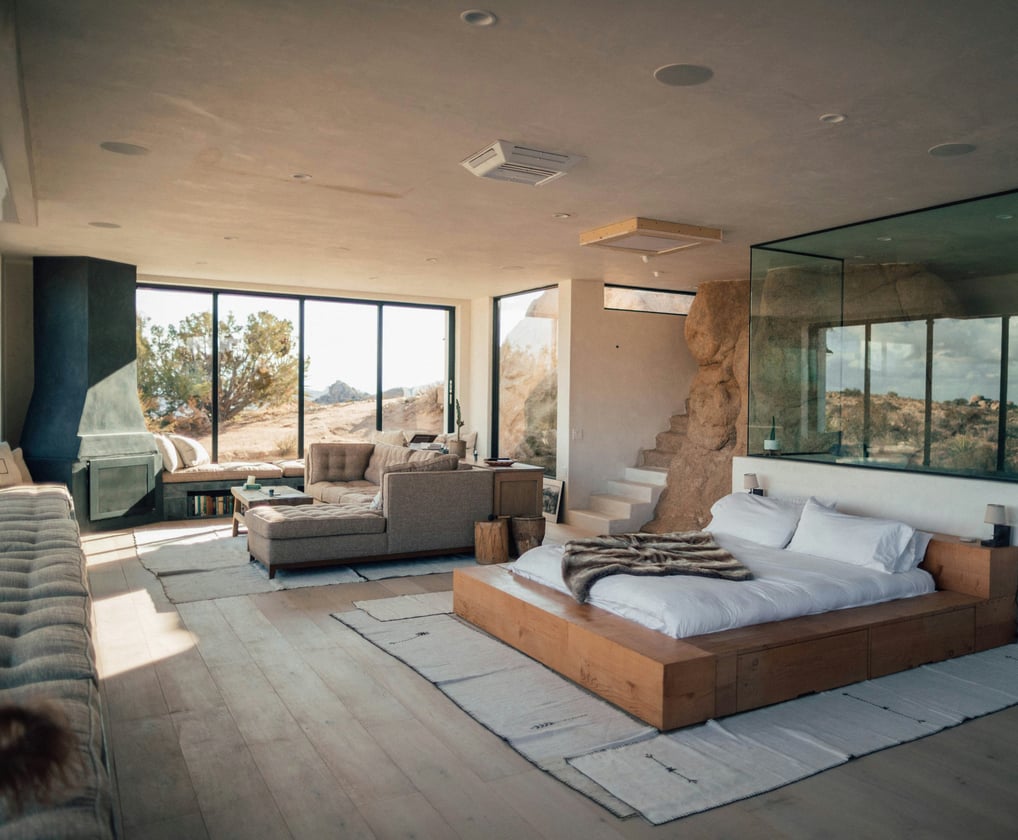

Your bedroom should be a sanctuary—a place of comfort, relaxation, and functionality. The way you arrange your furniture plays a crucial role in creating a harmonious and inviting space. Whether you’re working with a spacious master suite or a cozy apartment bedroom, thoughtful furniture placement can maximize space, improve flow, and enhance aesthetics.
From prioritizing the bed’s position to optimizing storage and lighting, these 10 best practices will help you design a bedroom that’s both stylish and practical. Let’s explore how to create a balanced layout that suits your lifestyle and makes the most of your available space.
Start with the Bed as the Focal Point
Optimize Nightstand Placement for Functionality
Create a Functional Seating Area (If Space Allows)
Maximize Storage with Smart Furniture Choices
Ensure Proper Lighting Placement
Maintain Clear Pathways for Easy Movement
Use Mirrors Strategically to Enhance Space
Balance Furniture Scale with Room Size
Incorporate Personal Style with Decorative Accents
Follow Feng Shui or Vastu Principles for Harmony
1. Start with the Bed as the Focal Point
Nightstands should be within arm’s reach of the bed, ideally matching the bed’s height for a cohesive look. If space is limited, consider floating shelves or wall-mounted ledges instead of bulky tables.
For couples, matching nightstands on both sides create symmetry, while single sleepers can opt for a single nightstand with additional storage like a small dresser or bookshelf. Ensure there’s enough surface area for essentials like lamps, phones, and books without overcrowding.
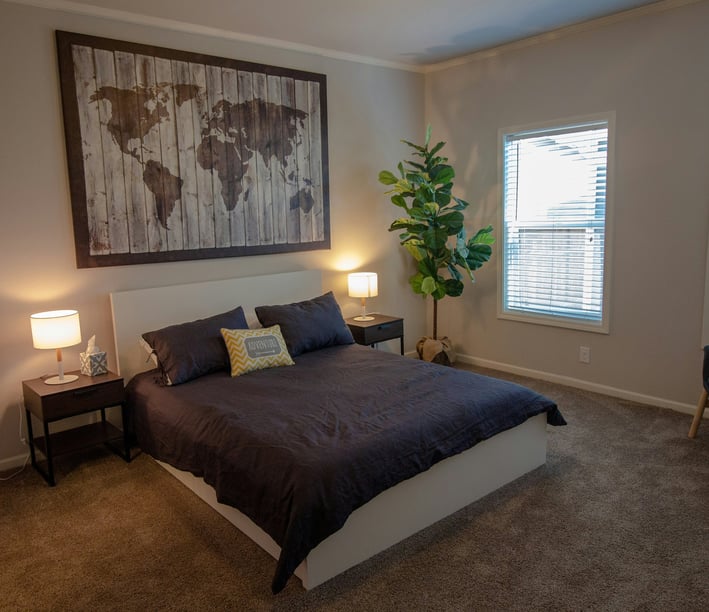

If your bedroom is spacious enough, adding a seating area—such as an armchair, loveseat, or bench at the foot of the bed—can enhance comfort and style.
This space can serve as a reading nook, a spot to put on shoes, or extra seating when needed. In smaller rooms, a compact ottoman with hidden storage can double as seating and a place to store extra blankets. Position seating near a window or in a corner to avoid obstructing pathways.
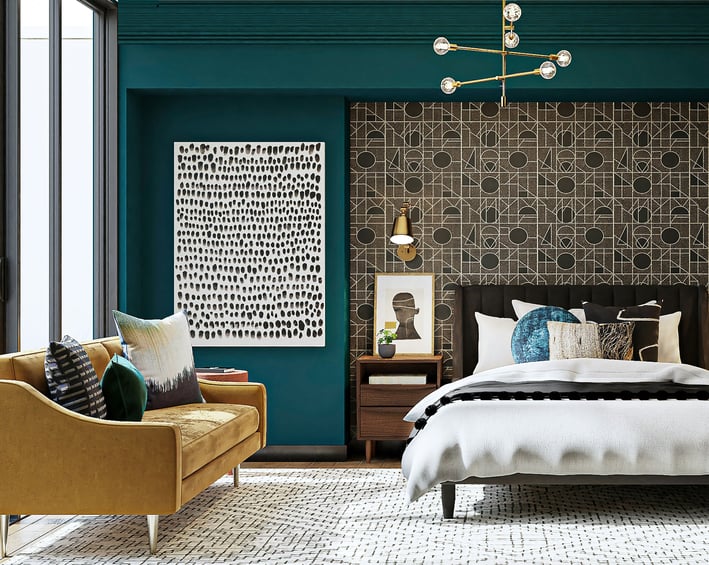

Clutter can disrupt relaxation, so incorporating storage-friendly furniture is key. Choose beds with built-in drawers or under-bed storage bins for extra linens and seasonal clothing. A tall dresser or wardrobe saves floor space, while a mirrored closet can make the room appear larger.
If space is tight, consider multifunctional pieces like a storage bench or a bedside table with drawers. Keeping frequently used items easily accessible while storing lesser-used belongings out of sight helps maintain a clean, serene environment.
The bed is the centerpiece of any bedroom, so its placement should be prioritized. Ideally, position it against the longest uninterrupted wall to create balance. In master bedrooms, a centered bed with nightstands on either side offers symmetry and easy access. For smaller rooms, placing the bed in a corner can free up floor space. Avoid positioning the bed directly in line with the door, as this can disrupt the room’s energy flow according to Vastu and Feng Shui principles.
If possible, leave enough walking space around the bed—at least two feet on each side—for ease of movement.
3. Create a Functional Seating Area (If Space Allows)
2. Optimize Nightstand Placement for Functionality
4. Maximize Storage with Smart Furniture Choices
Layered lighting enhances both functionality and ambiance. A central ceiling light provides overall illumination, while bedside lamps offer task lighting for reading. Wall sconces or pendant lights can save nightstand space in smaller rooms. If you have a dressing area, a well-placed vanity mirror with LED lighting ensures proper visibility. Avoid harsh overhead lights that can feel clinical—opt for warm, dimmable bulbs to create a relaxing atmosphere.
5. Ensure Proper Lighting Placement
6. Maintain Clear Pathways for Easy Movement
A well-arranged bedroom should allow for smooth movement without obstacles. Leave at least two to three feet of walking space around the bed and between furniture pieces.
Avoid blocking windows or doors with large dressers or chairs. In smaller rooms, consider sliding or folding doors to save space. If your bedroom doubles as a workspace, position the desk so it doesn’t interfere with the sleeping area.
7. Use Mirrors Strategically to Enhance Space
Mirrors can make a bedroom feel larger and brighter by reflecting natural light. A large mirror opposite a window maximizes sunlight, while a full-length mirror near the closet is practical for dressing.
For a decorative touch, consider an ornate framed mirror above the dresser or a cluster of smaller mirrors as a gallery wall. Avoid placing mirrors directly facing the bed if you prefer a more tranquil sleep setting.
8. Balance Furniture Scale with Room Size
Oversized furniture can overwhelm a small bedroom, while tiny pieces may look lost in a large space. Choose a bed proportional to the room—queen or full-sized beds work well in average rooms, while king beds suit spacious master bedrooms. Similarly, opt for a dresser that fits comfortably without crowding the space.
If you have high ceilings, tall bookshelves or armoires can draw the eye upward, making the room feel grander.
9. Incorporate Personal Style with Decorative Accents
10. Follow Feng Shui or Vastu Principles for Harmony
For those who believe in energy flow, arranging furniture according to Feng Shui or Vastu can promote better sleep and positivity. Key tips include placing the bed in the "command position" (facing the door but not directly in line with it), avoiding sharp corners pointing toward the bed, and using calming colors like soft blues and neutrals. Keeping electronics away from the sleeping area also contributes to a more peaceful environment.
Final Thoughts
A well-arranged bedroom combines practicality with personal style. By following these best practices—from optimizing storage to balancing proportions—you can create a space that feels inviting, organized, and perfectly suited to your needs. Whether you prefer a minimalist retreat or a cozy haven, thoughtful furniture placement makes all the difference in achieving your ideal bedroom setup.
MOST READ
HOUSE TOURS
Stunning 2700 Sq. Ft. Nalukettu Home with a Modern Touch
2 MIN READ
HOUSE TOURS
Exploring a 5BHK Contemporary Home in Kerala
2 MIN READ
HOUSE TOURS
Elegant 3BHK Home Tour
2 MIN READ
HOUSE TOURS
Inside a Stunning Rs. 2 Crore Dream Home in Palai, Kerala – UrbanSpacee’s First Home Tour!
3 MIN READ
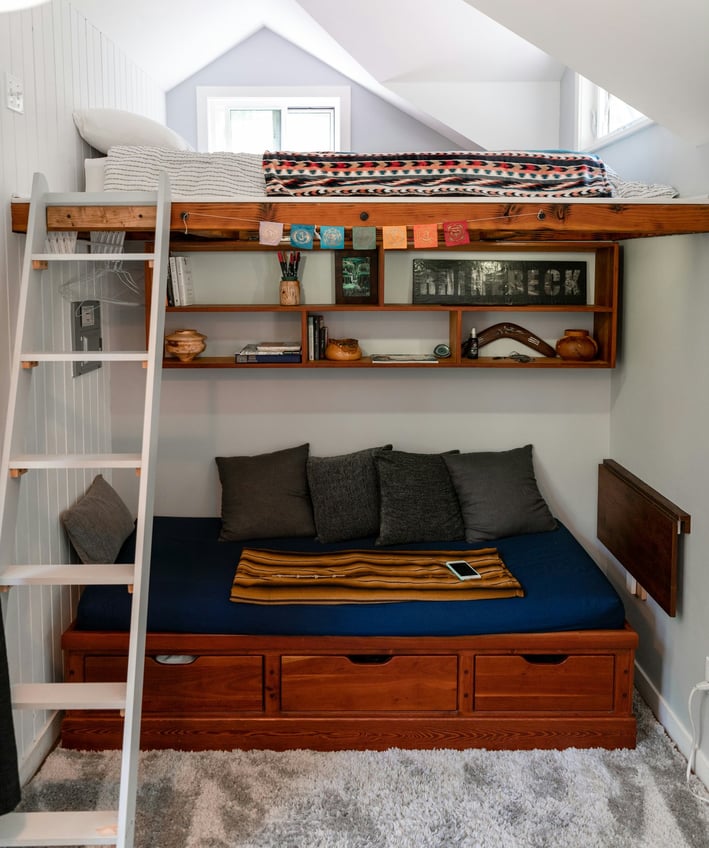

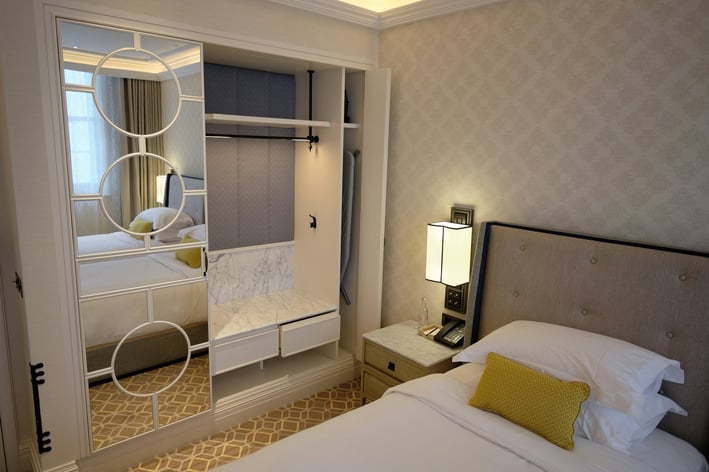

While functionality is important, your bedroom should also reflect your personality. A stylish rug under the bed adds warmth, while artwork above the headboard creates a focal point. Throw pillows and blankets in coordinating colors tie the look together.
If you prefer minimalism, keep decor simple with a few statement pieces like a sculptural lamp or a textured wall hanging.
Follow Us
Explore smart furniture ideas for modern living.
For Enquiry
contact: info@urbanspacee.com,
+91 91886 37751
© 2025. All rights reserved./Terms and Conditions/Privacy policy
Newsletters
This blog contains affiliate links.For promoting there products ,we may earn a commission if you purchase through these links, at no extra cost to you.
